Top 8 Exercise and Physical Activity Strategies for Boosting Mental Health
This outline provides a comprehensive framework for a course on exercise and physical activity focused on self-care strategies for mental health and resilience
“About the Author: Dr. Alfred Egedovo is a family physician specializing in global health and surgical innovation. He is the Chief Medical Director at GHC Hospitals and an advocate for AI in healthcare and poverty reduction.https://www.youtube.com/watch?v=Zam7iKS1ngU
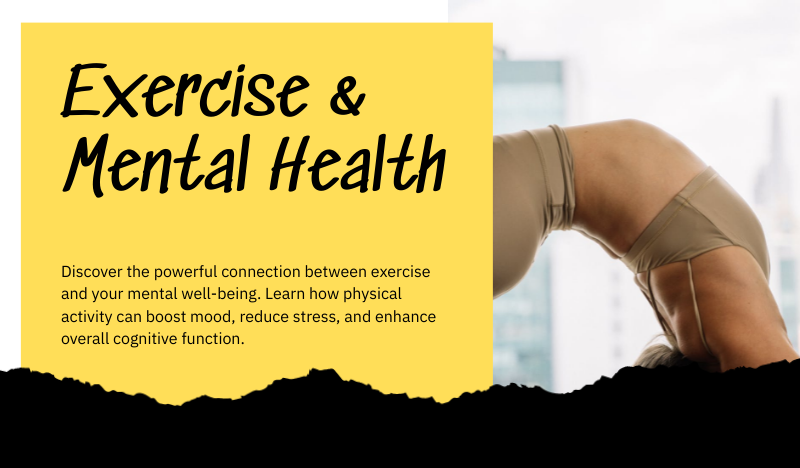
Section 1: Introduction to Exercise and Mental Health
- 1.1 Understanding the Connection Between Exercise and Mental Health
- The Science Behind Exercise and Mood
- How Physical Activity Reduces Stress and Anxiety
- 1.2 The Importance of Regular Exercise
- Benefits of Consistent Physical Activity
- Setting Realistic Goals for Your Exercise Journey
Section 2: Types of Exercise for Mental Well-Being
- 2.1 Aerobic Exercises
- Benefits of Cardio for Mental Health
- Examples of Aerobic Activities You Can Start Today
- 2.2 Strength Training and Flexibility Exercises
- How Strength Training Enhances Resilience
- The Role of Flexibility and Stretching in Mental Health
Section 3: Creating a Personal Exercise Plan
- 3.1 Assessing Your Current Fitness Level
- Self-Assessment Techniques
- Setting Personalized Fitness Goals
- 3.2 Designing Your Weekly Exercise Schedule
- Balancing Different Types of Exercise
- Tips for Staying Consistent and Motivated
Section 4: Incorporating Mindfulness into Exercise
- 4.1 Mindful Movement Practices
- What is Mindful Movement?
- Benefits of Combining Mindfulness with Physical Activity
- 4.2 Breathing Techniques During Exercise
- How to Integrate Breathing Exercises
- The Impact of Breath on Performance and Relaxation
Section 5: Overcoming Barriers to Exercise
- 5.1 Identifying Common Obstacles
- Time Management and Scheduling Issues
- Addressing Motivation and Energy Levels
- 5.2 Strategies for Success
- Creating a Support System
- Finding Enjoyable Activities to Boost Commitment
Section 6: Tracking Progress and Celebrating Success
- 6.1 Monitoring Your Fitness Journey
- Tools and Apps for Tracking Progress
- Importance of Self-Reflection and Adjustment
- 6.2 Celebrating Milestones and Achievements
- Ways to Reward Yourself
- Building on Success for Continued Growth
Section 7: Long-Term Strategies for Maintaining an Active Lifestyle
- 7.1 Building a Sustainable Routine
- Tips for Making Exercise a Lifelong Habit
- Adapting Your Routine as Life Changes
- 7.2 Continuing Education and Community Engagement
- Resources for Learning More About Exercise
- Joining Groups and Classes for Motivation
Section 8: Conclusion and Next Steps
Next Steps for Enhancing Your Physical and Mental Well-Being
8.1 Recap of Key Concepts
Summary of Benefits and Practices
Encouragement to Keep Moving Forward
8.2 Resources for Further Exploration
Recommended Books, Websites, and Communities
Section 1: Introduction to Exercise and Mental Health
1.1 Understanding the Connection Between Exercise and Mental Health

Exercise is more than just a way to get fit; it’s a powerful tool for enhancing your mental health. When you engage in physical activity, your body releases endorphins, often referred to as “feel-good” hormones. These chemicals interact with the receptors in your brain, reducing the perception of pain and triggering a positive feeling in the body. It’s like getting a natural high!
Research shows that regular exercise can significantly reduce symptoms of anxiety and depression. In fact, a study published in JAMA Psychiatry found that individuals who engage in regular physical activity report lower rates of depression. This is particularly important in our fast-paced world, where stressors are constant and mental health challenges are on the rise.
But how does this all work? When you exercise, your body also increases blood flow to the brain. This boost in circulation can help improve cognitive function, allowing you to think more clearly and make better decisions. Not to mention, exercise can improve your sleep quality. Better sleep leads to improved mood and greater resilience in the face of challenges.
Moreover, exercise can serve as a healthy coping mechanism. When life gets tough, hitting the gym or going for a run can provide a productive outlet for stress. Instead of turning to less healthy habits, like binge-watching TV or overeating, physical activity offers a constructive way to channel your energy.
So, if you’re feeling overwhelmed, remember that a simple walk or workout can make a significant difference. It’s not just about losing weight or building muscle; it’s about investing in your mental well-being. The connection between exercise and mental health is profound, and incorporating regular physical activity into your routine can be a game-changer.
1.2 The Importance of Regular Exercise

Many people understand that exercise is good for physical health, but its importance for mental well-being cannot be overstated. Regular physical activity helps you build resilience, which is crucial for navigating life’s ups and downs. Think of resilience as your mental armor; it helps you bounce back when life throws challenges your way.
First and foremost, consistency is key. Engaging in regular exercise, rather than sporadic bursts of activity, will yield the best results for your mental health. Experts recommend at least 150 minutes of moderate aerobic activity each week. This can be broken down into manageable chunks, such as 30 minutes a day, five days a week. Whether it’s a brisk walk, cycling, or dancing, find something you enjoy.
Setting realistic goals is also vital. If you’re starting from scratch, don’t aim to run a marathon right away. Instead, focus on small, achievable goals. Maybe it’s walking for 10 minutes a day or doing a short home workout. These small steps can lead to significant changes over time and help you build confidence in your abilities.
Another important aspect of regular exercise is the sense of community it can foster. Joining a class, walking with a friend, or participating in group sports can help you connect with others who share similar interests. Social interaction is a critical component of mental health, and exercising with others can provide support and motivation.
Finally, remember that any movement counts. Whether you’re gardening, cleaning the house, or playing with your kids, all physical activity contributes to your overall well-being. The goal is to make movement a natural part of your life. So, find ways to incorporate exercise into your daily routine, and you’ll likely notice improvements in your mental health.
In summary, regular exercise is essential for building resilience and enhancing mental well-being. By committing to a consistent routine, setting achievable goals, and finding community, you can harness the power of physical activity to improve your life.
Section 2: Types of Exercise for Mental Well-Being

2.1 Aerobic Exercises
Aerobic exercise, often referred to as cardio, is one of the most effective forms of physical activity for boosting mental health. This type of exercise increases your heart rate and improves your overall cardiovascular fitness. But the benefits extend beyond just physical health; aerobic exercises have a profound impact on your mood and mental well-being.
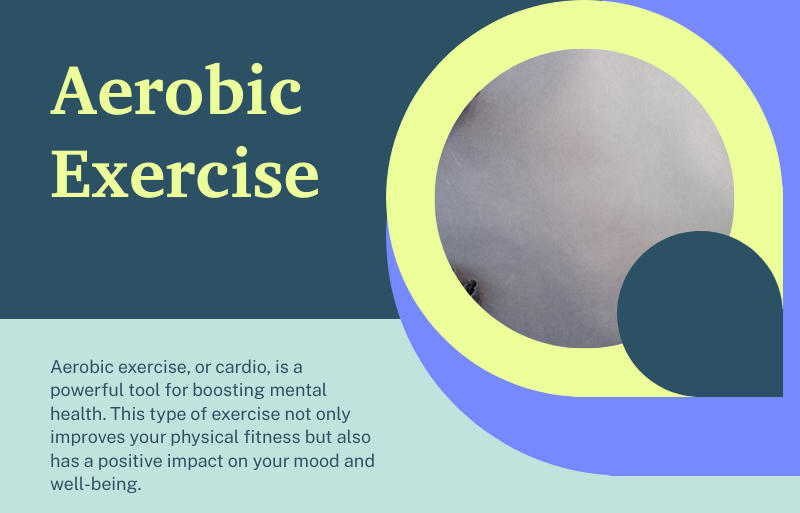
One of the primary benefits of aerobic exercise is its ability to release endorphins, which can improve your mood and create feelings of happiness. Think of that post-run euphoria—often referred to as the “runner’s high.” This feeling is not just a myth; it’s a real physiological response that can help reduce stress and anxiety levels. Engaging in aerobic activities regularly can lead to long-term improvements in your emotional state.
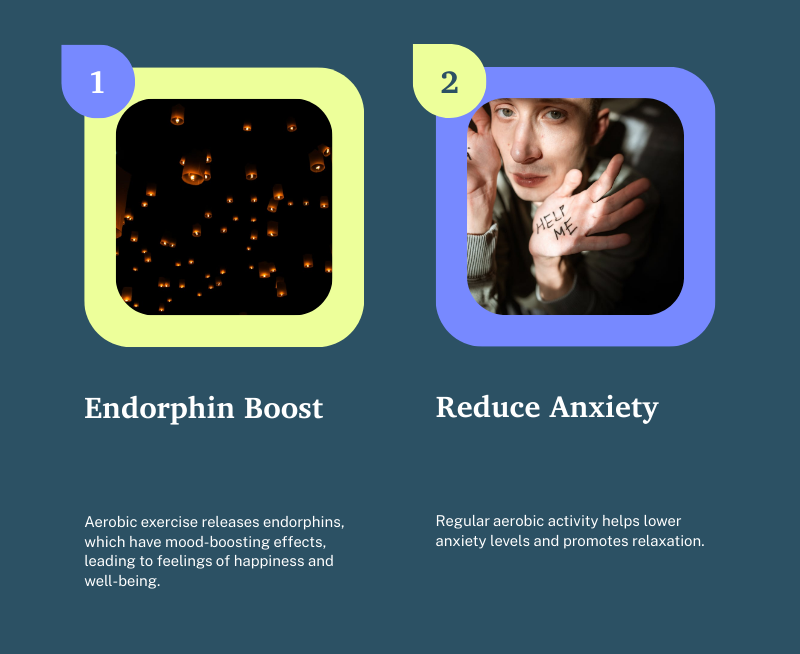
Another key advantage of aerobic exercise is its capacity to reduce symptoms of depression and anxiety. Research shows that individuals who engage in regular aerobic activities report lower levels of anxiety and depressive symptoms. For instance, a study published in Psychosomatic Medicine found that just 30 minutes of moderate aerobic exercise can significantly improve mood and reduce anxiety levels.
So, what types of aerobic exercises can you try? There are plenty of options to suit your preferences and lifestyle. Walking is one of the simplest and most accessible forms of aerobic exercise. Whether you stroll around your neighborhood or hike in nature, walking can be a great way to clear your mind and improve your mood.
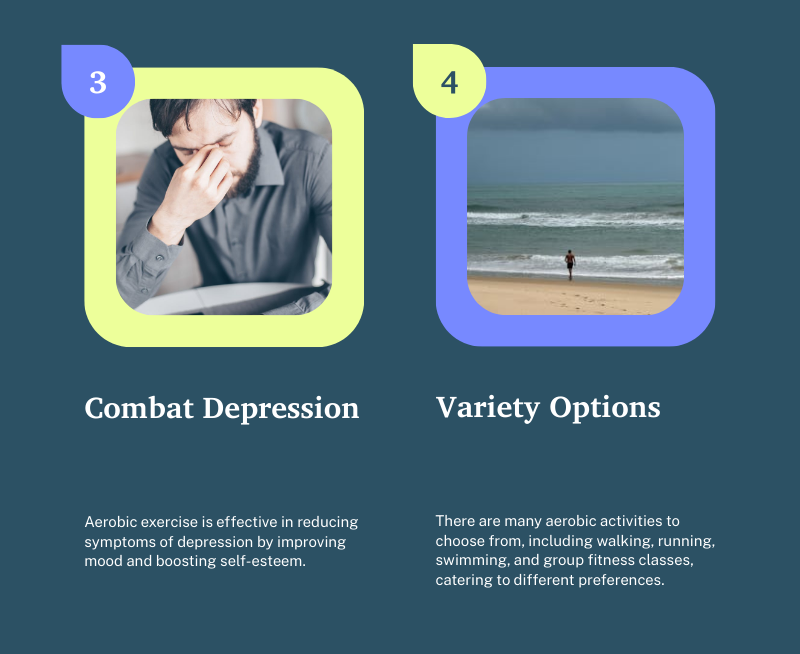
Running and jogging are also popular choices. If you’re looking for something more intense, cycling can provide an excellent workout while allowing you to enjoy the outdoors. Swimming is another fantastic option that combines aerobic activity with full-body engagement, making it a low-impact choice for those with joint concerns.
If you prefer a more social setting, group fitness classes like Zumba, spin, or kickboxing can be incredibly motivating. Not only do you get to enjoy a fun workout, but you also connect with others, which can enhance your social well-being.
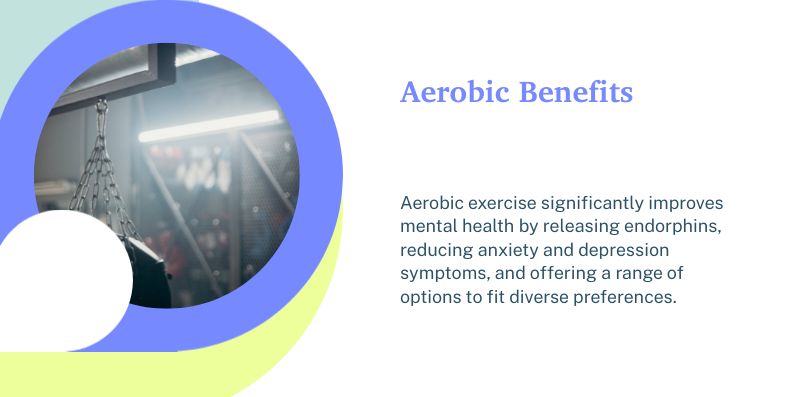
In summary, aerobic exercises are a powerful tool for improving mental health. By incorporating activities like walking, running, cycling, or group classes into your routine, you can experience the mood-boosting benefits that aerobic exercise has to offer.
2.2 Strength Training and Flexibility Exercises
While aerobic exercises are fantastic for mental health, strength training and flexibility exercises also play a critical role in enhancing well-being. These forms of exercise can improve your physical health and contribute to better mental resilience.
Strength training, often associated with lifting weights, is effective for building muscle and increasing overall strength. What many people don’t realize is that it can also have significant benefits for mental health. Engaging in strength training can boost self-esteem and confidence, especially as you notice physical improvements in your body.
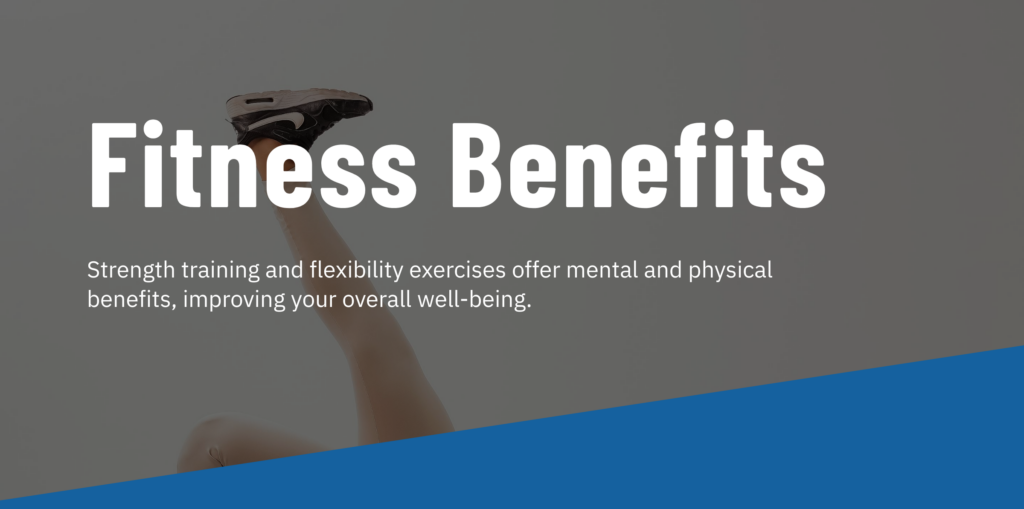
Studies have shown that strength training can help reduce symptoms of anxiety and depression. A review published in The American Journal of Psychiatry found that individuals participating in resistance training reported fewer depressive symptoms. This could be attributed to the sense of accomplishment that comes with lifting heavier weights or mastering new exercises.
Moreover, strength training can provide a sense of routine and discipline. Setting goals, whether it’s to lift a certain weight or complete a specific number of repetitions, can help you stay focused and motivated. This structure can be particularly beneficial during challenging times when you need a sense of control in your life.
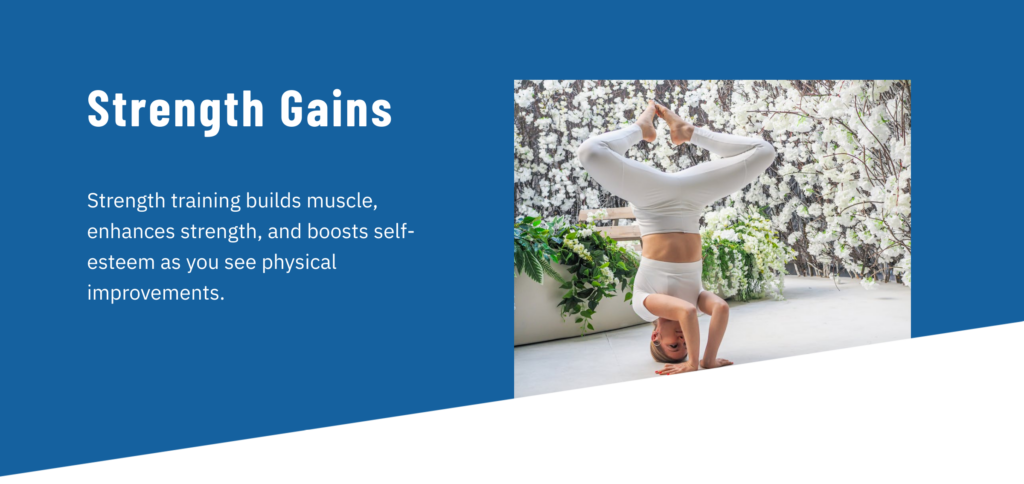
On the other hand, flexibility exercises, such as yoga and stretching, are essential for maintaining a balanced fitness routine. These exercises not only improve your physical flexibility but also promote relaxation and mindfulness. Practicing yoga has been linked to reduced stress levels and improved mood, making it an excellent complementary practice to aerobic and strength training.\
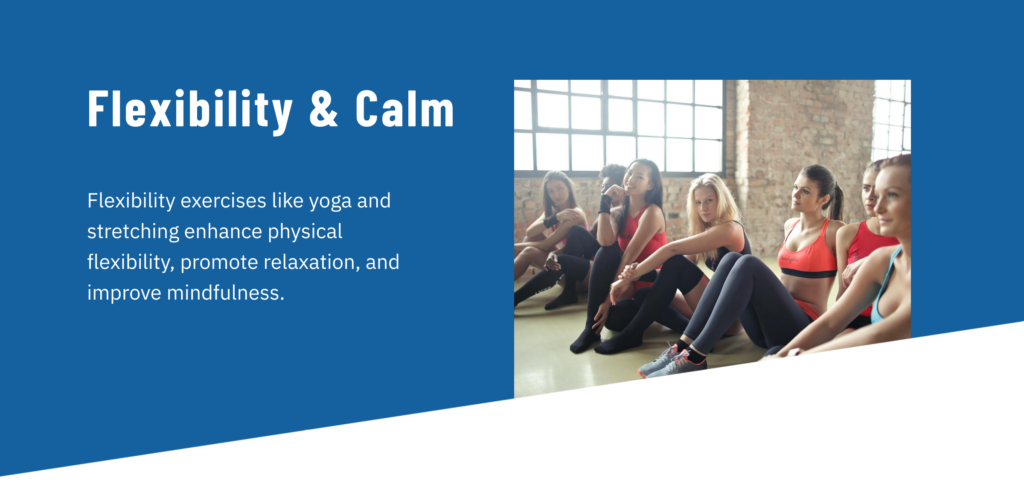
Yoga encourages deep breathing and mindfulness, allowing you to connect with your body and mind. This holistic approach can help reduce anxiety and promote a sense of calm. Additionally, stretching regularly can alleviate muscle tension, which can be especially beneficial if you carry stress in your body.
Incorporating both strength training and flexibility exercises into your fitness routine can create a well-rounded approach to mental well-being. Aim to include strength training at least two days a week and add flexibility exercises as part of your warm-up or cool-down.
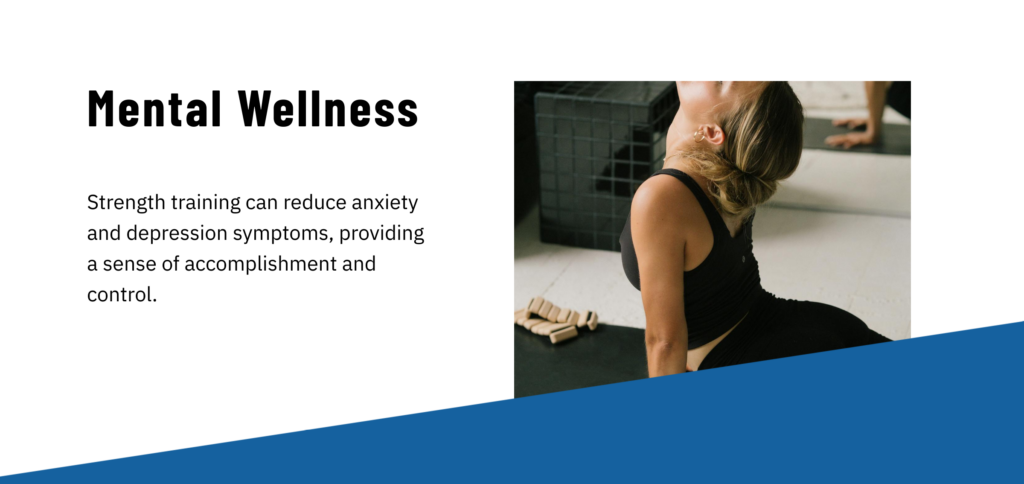
In summary, strength training and flexibility exercises are crucial components of a comprehensive fitness routine. By building strength, boosting self-esteem, and promoting relaxation through yoga or stretching, you can enhance your mental resilience and overall well-being.

Section 3: Creating a Personal Exercise Plan
3.1 Assessing Your Current Fitness Level
Before diving into an exercise routine, it’s essential to assess your current fitness level. Understanding where you stand can help you set realistic goals and create a plan that suits your needs. This assessment doesn’t have to be complicated; a few simple steps can provide valuable insights into your fitness.
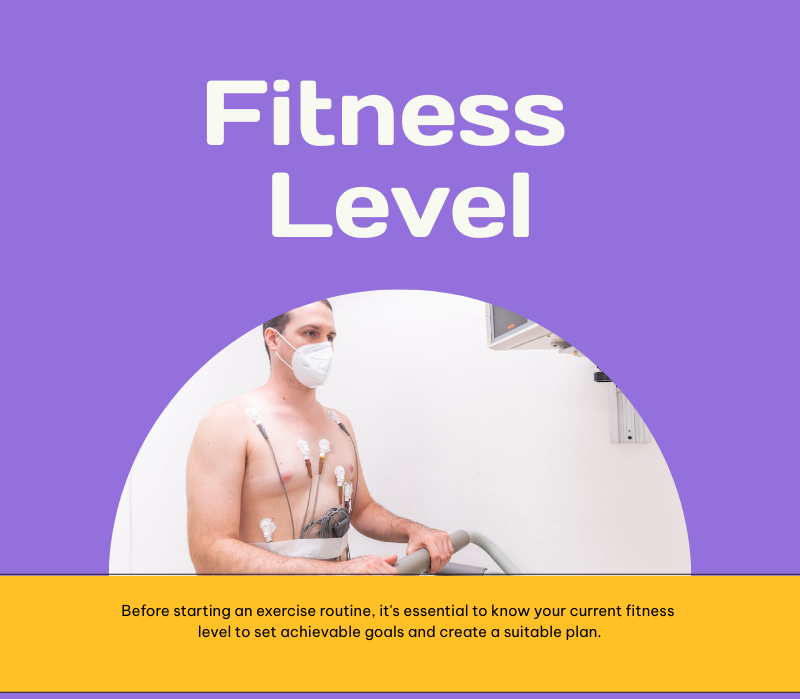
Start by considering your physical activity history. Think about the types of exercises you’ve done in the past and how often you engaged in them. Have you been active recently, or has it been a while? Recognizing your past experiences will help you gauge your comfort level with different types of exercise.
Next, evaluate your current physical condition. You can do this by performing a few basic fitness tests. For cardiovascular fitness, try a simple walk or jog for a set distance, such as one mile, and time yourself. For strength, consider how many push-ups or sit-ups you can do in one minute. For flexibility, see how far you can reach in a seated stretch. These tests can provide a baseline for your fitness level.
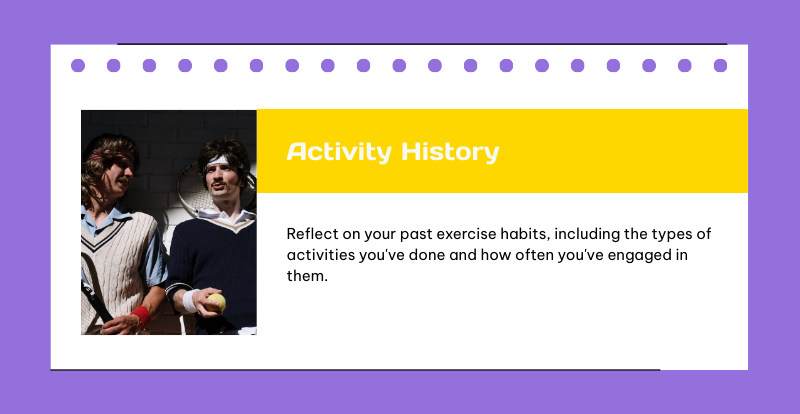
Don’t forget to consider any physical limitations or health conditions you may have. If you have joint issues, chronic pain, or any medical conditions, it’s important to take these into account when planning your exercise routine. Consulting with a healthcare professional or a certified fitness trainer can help you tailor your plan to suit your needs safely.
Finally, take note of how you feel after physical activity. Pay attention to your energy levels, mood, and overall well-being. This self-awareness will help you understand how different exercises affect you and can guide you in choosing activities that you enjoy.
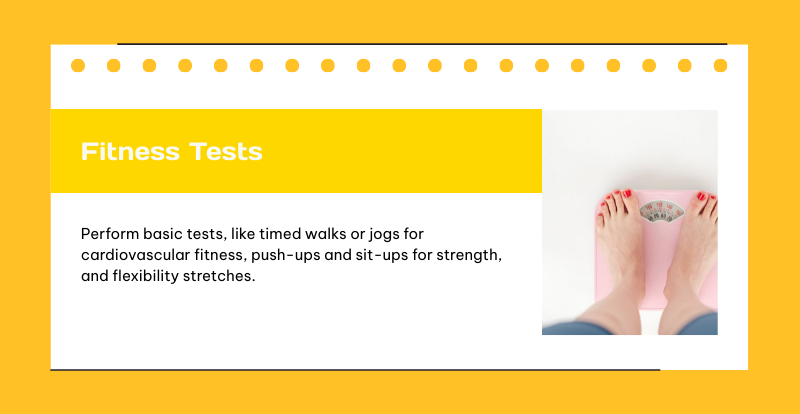
In summary, assessing your current fitness level involves reflecting on your activity history, performing basic fitness tests, considering any limitations, and being aware of how you feel after exercise. This assessment will serve as a foundation for creating a personalized exercise plan that aligns with your goals.
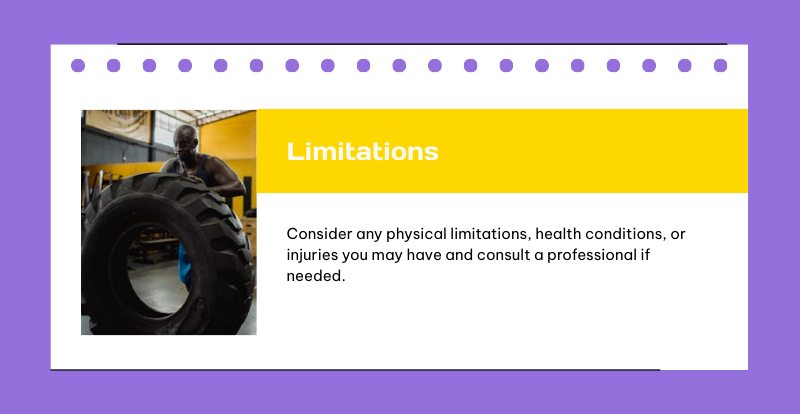
3.2 Designing Your Weekly Exercise Schedule
Now that you have a better understanding of your fitness level, it’s time to design your weekly exercise schedule. A well-structured plan will help you stay organized, motivated, and consistent with your workouts. Here’s how to create a balanced schedule that incorporates different types of exercise.
Start by determining how much time you can realistically dedicate to exercise each week. Aim for at least 150 minutes of moderate-intensity aerobic activity, along with two days of strength training. If you’re just starting, remember that even shorter sessions can be effective. Consider starting with three to four days a week and gradually increasing as you feel more comfortable.
Next, mix different types of exercises throughout the week to create a balanced routine. For example, you could dedicate two days to aerobic activities, two days to strength training, and one day to flexibility exercises like yoga or stretching. This variety will keep your workouts fresh and engaging, helping to prevent boredom.
When scheduling your workouts, consider your energy levels and preferences. If you’re a morning person, try to fit your exercise sessions in before your day gets busy. If you prefer to unwind after work, plan your workouts for the evening. Choose times that work best for you and your lifestyle, making it easier to stick with your plan.
Don’t forget to include rest days in your schedule. Rest is crucial for recovery and allows your muscles to heal and grow stronger. You can also incorporate active rest days, where you engage in light activities such as walking or gentle stretching. This keeps you moving without overexerting yourself.
Lastly, stay flexible with your schedule. Life happens, and sometimes plans change. If you miss a workout, don’t be too hard on yourself. Just find a way to make up for it later in the week. The key is to maintain consistency over time rather than striving for perfection.
In summary, designing a weekly exercise schedule involves determining your available time, mixing different types of exercise, considering your energy levels, including rest days, and remaining flexible. By creating a well-rounded plan, you’ll be on your way to achieving your fitness goals and enhancing your mental well-being.
Section 4: Incorporating Mindfulness into Exercise
4.1 Mindful Movement Practices
Incorporating mindfulness into your exercise routine can elevate your workouts and enhance your mental well-being. Mindful movement practices focus on being present during physical activity, allowing you to connect your mind and body. This approach not only improves your physical performance but also fosters a deeper awareness of your thoughts and feelings.
So, what does mindful movement look like? It’s all about paying attention to how your body feels while you exercise. Instead of zoning out or getting caught up in distractions, bring your awareness to your breath, movements, and sensations. For example, during a run, focus on the rhythm of your feet hitting the ground and the flow of your breath. Notice how your body feels with each stride—are your muscles engaged? Is your heart rate increasing? This heightened awareness can transform your workout experience.
Yoga is one of the most popular forms of mindful movement. In yoga, practitioners are encouraged to focus on their breath and the sensations in their bodies as they move through various poses. This practice cultivates mindfulness and can lead to improved flexibility, strength, and relaxation. Even if you’re not a yoga enthusiast, you can apply these principles to any form of exercise.
Another excellent way to practice mindful movement is through tai chi or qigong. These ancient martial arts emphasize slow, deliberate movements combined with deep breathing. Practicing these forms can promote relaxation, balance, and mental clarity, making them fantastic additions to your exercise routine.
You can also incorporate mindfulness during strength training. Instead of rushing through sets, take your time. Focus on your form and technique, and pay attention to how your muscles feel during each repetition. This focused approach can enhance your results and help prevent injuries by ensuring proper alignment.
In summary, mindful movement practices bring awareness to your exercise routine, enhancing both physical and mental well-being. By focusing on your breath, sensations, and movements, you can cultivate a deeper connection with your body and transform your workouts into a more fulfilling experience.
4.2 Breathing Techniques During Exercise
Breathing techniques play a crucial role in enhancing your exercise experience and overall mental health. Learning to control your breath can improve your performance, reduce stress, and promote relaxation during physical activity. Let’s explore some effective breathing techniques you can incorporate into your workouts.
One of the simplest and most effective techniques is diaphragmatic breathing, also known as belly breathing. This method encourages deep, full breaths that engage the diaphragm rather than shallow chest breathing. To practice diaphragmatic breathing, find a comfortable position—either sitting or lying down. Place one hand on your chest and the other on your belly. Inhale deeply through your nose, allowing your belly to rise while keeping your chest relatively still. Exhale slowly through your mouth, feeling your belly fall. Practice this for a few minutes to develop awareness of your breath.
Incorporating this technique during exercise can enhance your oxygen intake and improve your stamina. For instance, when running or cycling, focus on deep belly breaths rather than shallow chest breaths. This can help you maintain energy levels for longer periods and reduce feelings of fatigue.
Another effective breathing technique is the 4-7-8 method, which can be especially useful during high-intensity workouts. To practice this technique, inhale through your nose for a count of four, hold your breath for a count of seven, and exhale through your mouth for a count of eight. This method helps calm the nervous system and can be especially beneficial during moments of stress or anxiety in your workout.
You can also use breath control to enhance relaxation during strength training. As you lift weights, exhale during the exertion phase (when you’re lifting) and inhale during the relaxation phase (when you’re lowering the weight). This pattern helps maintain your focus and can improve your performance.
Finally, consider incorporating breathwork into your cool-down routine. After finishing your workout, take a few moments to engage in deep breathing exercises. This practice can help lower your heart rate, promote relaxation, and prepare your body for recovery.
In summary, mastering breathing techniques can significantly enhance your exercise experience. By practicing diaphragmatic breathing, the 4-7-8 method, and breath control during workouts, you can improve your performance and promote a sense of calm and well-being.
Section 5: Overcoming Barriers to Exercise
5.1 Identifying Common Obstacles
Starting and maintaining an exercise routine can be challenging, and it’s essential to acknowledge the barriers that might stand in your way. Understanding these obstacles is the first step toward overcoming them. Let’s explore some common challenges people face when it comes to exercising regularly.
One of the most prevalent barriers is time management. Many people feel they are too busy to fit exercise into their schedules. Between work, family, and social obligations, finding time for physical activity can seem impossible. However, it’s crucial to recognize that even short bouts of exercise can be effective. Rather than viewing exercise as a lengthy commitment, consider breaking it into smaller, manageable sessions throughout the day.
Another common obstacle is motivation. It can be tough to feel inspired to work out, especially on days when you’re feeling tired or stressed. This lack of motivation can be compounded by feelings of self-doubt or negative body image. It’s important to remind yourself of the benefits of exercise—not just for physical health but for mental well-being as well. Setting realistic goals and celebrating small victories can help build motivation over time.
In addition to time and motivation, environmental factors can also be barriers. If you live in an area without access to gyms or safe outdoor spaces, finding opportunities to exercise can be difficult. However, there are many ways to adapt your routine. Consider home workouts, online classes, or even simple activities like walking around your home or yard.
Physical limitations, such as injuries or chronic pain, can also hinder your ability to exercise. If you’re dealing with these issues, it’s essential to consult with a healthcare professional or a certified trainer who can help design a safe and effective exercise plan tailored to your needs.
Lastly, the fear of judgment or feeling uncomfortable in a gym setting can be a significant barrier for many individuals. Remember that everyone starts somewhere, and most people are focused on their own workouts. Finding a supportive community, whether online or in person, can help alleviate these feelings and provide encouragement.
In summary, identifying common obstacles like time management, motivation, environmental factors, physical limitations, and fear of judgment is crucial for overcoming barriers to exercise. Acknowledging these challenges can empower you to find solutions and stay committed to your fitness journey.
5.2 Strategies for Success
Now that we’ve identified potential barriers to exercise, let’s explore strategies to overcome them and ensure your success in maintaining a regular fitness routine. Implementing these techniques can help you stay motivated and committed to your exercise goals.
First, prioritize your schedule by treating exercise like an important appointment. Block out specific times in your calendar for workouts and consider them non-negotiable. This approach helps create accountability and reinforces the idea that physical activity is a vital part of your well-being.
Next, start small and gradually build up your routine. If you’re new to exercise or returning after a break, begin with just 10-15 minutes of activity a day. As you become more comfortable, you can increase the duration and intensity. This incremental approach reduces the feeling of overwhelm and allows you to celebrate small successes along the way.
Finding activities that you genuinely enjoy is another key to success. Experiment with various forms of exercise, from dancing to hiking to team sports. When you enjoy what you’re doing, you’re more likely to stick with it. Consider joining classes or groups in your community to explore new activities and meet like-minded individuals.
Creating a support system can also significantly enhance your exercise journey. Share your goals with friends or family members who can encourage you and hold you accountable. You might also consider finding a workout buddy or joining a fitness group. Having someone to share the experience with can make exercising more enjoyable and motivate you to keep going.
Additionally, celebrate your progress, no matter how small. Keep track of your achievements in a journal or use fitness apps to monitor your workouts. Acknowledging your efforts can boost your confidence and reinforce your commitment to staying active.
Lastly, don’t forget to be flexible and adaptable. Life can be unpredictable, and sometimes your plans may change. If you miss a workout or need to adjust your schedule, don’t be too hard on yourself. Focus on getting back on track rather than dwelling on setbacks.
In summary, implementing strategies such as prioritizing your schedule, starting small, finding enjoyable activities, creating a support system, celebrating progress, and being adaptable can help you overcome barriers and achieve success in your exercise journey. With these techniques, you can maintain a regular fitness routine that enhances both your physical and mental well-being.
Section 6: Tracking Progress and Celebrating Success
6.1 Monitoring Your Fitness Journey
Tracking your progress is a crucial part of maintaining a successful exercise routine. It not only helps you stay accountable but also allows you to recognize how far you’ve come. By monitoring your fitness journey, you can make informed adjustments to your plan and celebrate your achievements along the way.
One of the simplest ways to track your progress is through a fitness journal. In this journal, you can write down your workouts, including the types of exercises you performed, the duration, and how you felt during the session. Logging your workouts provides a tangible record of your efforts and can motivate you to keep pushing forward.
If you prefer a digital approach, consider using fitness apps. Many apps allow you to log your workouts, set goals, and even track your nutrition. Apps like MyFitnessPal, Strava, or Fitbit can offer insights into your activity levels and help you stay accountable. Plus, they often provide notifications and reminders, which can be helpful in keeping you on track.
Another effective way to monitor progress is by taking regular fitness assessments. These assessments can include timed runs, strength tests (like how many push-ups you can do), or flexibility tests (like how far you can reach in a seated stretch). Schedule these assessments every few weeks to gauge your improvements. Seeing your progress in numbers can be incredibly motivating.
Don’t forget to pay attention to other indicators of progress besides physical improvements. Notice how your energy levels may increase, how your mood improves, or how your sleep quality enhances with regular exercise. These non-physical benefits are just as important and provide a holistic view of the positive impact of your fitness journey.
Lastly, consider sharing your progress with others. Whether it’s through social media, a blog, or simply with friends and family, sharing your journey can provide additional motivation. You might even inspire others to embark on their fitness journeys!
In summary, monitoring your fitness journey through a journal, fitness apps, regular assessments, and sharing your progress can help you stay accountable and motivated. By tracking your achievements, you’ll be more aware of your growth and the positive changes exercise brings to your life.
6.2 Celebrating Milestones and Achievements
Celebrating your milestones and achievements is an essential part of your fitness journey. Acknowledging your successes, no matter how small, reinforces your commitment and keeps you motivated. Here are some effective ways to celebrate your progress and encourage continued growth.
First, set specific milestones along your fitness journey. These could be short-term goals, like completing a certain number of workouts in a month, or long-term goals, such as running a 5K or lifting a specific weight. Having clear milestones gives you something to work toward and makes it easier to track your progress.
When you reach a milestone, take the time to celebrate! This can be as simple as treating yourself to a favorite meal, enjoying a relaxing spa day, or buying new workout gear. Celebrating your achievements not only acknowledges your hard work but also reinforces positive behaviors that lead to further success.
You might also consider creating a vision board or a progress chart. A vision board can be a fun and creative way to visualize your goals and the milestones you want to achieve. As you reach each goal, you can mark it on your chart or board, providing a visual representation of your progress. This can serve as a constant reminder of your journey and motivate you to keep pushing forward.
Another way to celebrate is by sharing your achievements with others. Whether it’s posting about your accomplishments on social media or discussing them with friends and family, sharing your journey can provide additional encouragement and support. You might even find a community of like-minded individuals who can celebrate with you.
Finally, don’t forget to reflect on your journey. Take a moment to look back at where you started and acknowledge how far you’ve come. Reflecting on your growth can deepen your appreciation for the hard work you’ve put in and inspire you to continue striving for your goals.
In summary, celebrating milestones and achievements is a crucial aspect of your fitness journey. By setting specific goals, treating yourself, creating visual representations of your progress, sharing your successes, and reflecting on your journey, you can maintain motivation and enhance your overall well-being.
Section 7: Long-Term Strategies for Maintaining an Active Lifestyle
7.1 Building a Sustainable Routine
Creating a sustainable exercise routine is essential for long-term success in maintaining an active lifestyle. It’s not just about working out for a few weeks; it’s about making physical activity a regular part of your life. Here are some strategies to help you build a routine that you can stick to for the long haul.
First, focus on finding activities that you genuinely enjoy. If you dread your workouts, you’re less likely to stay committed. Experiment with different forms of exercise—dance classes, hiking, swimming, cycling, or team sports. The more fun you have, the easier it will be to incorporate physical activity into your daily life.
Next, set realistic expectations. Understand that life can be unpredictable, and some days will be busier than others. Instead of aiming for perfection, aim for consistency. Even if you can only fit in a quick 10-minute workout, that’s still a step in the right direction. Celebrate those small wins, as they contribute to your overall progress.
Another technique is to create a flexible schedule. While it’s essential to have a routine, it’s equally important to be adaptable. If something comes up and you can’t make it to your planned workout, find another time to fit it in. Flexibility allows you to navigate life’s demands without feeling guilty for missing a session.
To reinforce your commitment, consider involving a workout buddy or joining a fitness group. Exercising with others can make workouts more enjoyable and create a sense of accountability. When someone is counting on you to show up, you’re more likely to stick to your routine.
You can also incorporate physical activity into your daily life. Look for opportunities to move more throughout the day—take the stairs instead of the elevator, walk or bike to work, or do a quick workout during your lunch break. These small changes can add up significantly over time.
Lastly, periodically reassess your routine. As you progress and your interests change, it’s essential to adapt your exercise plan accordingly. Set new goals, try different activities, and keep your workouts fresh. This will help prevent boredom and keep you engaged in your fitness journey.
In summary, building a sustainable routine involves finding enjoyable activities, setting realistic expectations, creating a flexible schedule, involving others, incorporating movement into your daily life, and periodically reassessing your routine. By following these strategies, you can maintain an active lifestyle that lasts a lifetime.
7.2 Continuing Education and Community Engagement
Continuing education and community engagement are vital components of maintaining an active lifestyle. By staying informed and connected, you can enhance your fitness journey and motivate yourself to stay engaged in physical activity. Here are some tips to help you continue learning and connect with others in your fitness community.
Start by seeking out reputable resources. Read books, watch instructional videos, or follow fitness blogs that provide valuable insights into exercise techniques, nutrition, and overall well-being. Staying informed about the latest research and trends can inspire you to try new activities and refine your existing routine.
You might also consider taking workshops or attending classes in your area. Many gyms and community centers offer specialized programs that focus on specific types of exercise, such as yoga, Pilates, or martial arts. These classes can deepen your understanding of the activity and provide new skills that enhance your workout.
Online courses and webinars are another excellent option for expanding your fitness knowledge. Many platforms offer courses on various subjects, from strength training to mindfulness in fitness. Learning from experts in the field can provide you with valuable insights and motivate you to explore new areas of interest.
Engaging with your local fitness community can also be incredibly rewarding. Look for local clubs, groups, or meetups that focus on physical activity. Participating in group workouts, running clubs, or outdoor adventures can foster a sense of belonging and provide motivation to stick with your routine.
Social media can also play a role in community engagement. Follow fitness influencers, join online fitness groups, or participate in challenges. Connecting with others who share your interests can provide inspiration, encouragement, and accountability as you navigate your fitness journey.
Lastly, consider volunteering for fitness-related events or organizations. Whether it’s helping out at a local race or participating in community fitness initiatives, giving back can strengthen your connection to your community and reinforce your commitment to an active lifestyle.
In summary, continuing education and community engagement are essential for maintaining an active lifestyle. By seeking out reputable resources, attending workshops, participating in local fitness groups, leveraging social media, and volunteering, you can enhance your fitness journey and stay motivated to lead an active life.
Section 8: Conclusion and Next Steps
8.1 Recap of Key Concepts
As we conclude this course on exercise and physical activity for mental health, it’s essential to recap the key concepts we’ve explored. Understanding the connection between exercise and mental well-being is crucial. Regular physical activity offers numerous benefits, including enhanced mood, reduced anxiety, and improved resilience. By making exercise a priority, you’re investing in your mental health and overall quality of life.
We discussed various types of exercise, including aerobic activities, strength training, and flexibility exercises. Each type plays a unique role in promoting physical and mental well-being. Aerobic exercises like walking, running, and swimming release endorphins that elevate your mood, while strength training builds self-esteem and resilience. Flexibility exercises, such as yoga, promote relaxation and mindfulness, creating a holistic approach to fitness.
Creating a personal exercise plan tailored to your fitness level and preferences is vital for success. By assessing your current level of fitness and designing a weekly schedule that includes a mix of activities, you can stay engaged and committed to your routine. Remember to monitor your progress and celebrate your achievements, no matter how small, as these milestones can boost your motivation.
Incorporating mindfulness into your exercise routine enhances your experience. By practicing mindful movement and utilizing breathing techniques, you can cultivate a deeper connection with your body and enhance the mental benefits of physical activity.
We also addressed common barriers to exercise, such as time management and motivation. By identifying these obstacles and implementing strategies for success, you can overcome challenges and maintain a consistent routine. Remember that flexibility is key—life can be unpredictable, and adapting your plans will help you stay committed to your fitness goals.
Lastly, we discussed the importance of continuing education and community engagement. By seeking out new knowledge, participating in local fitness groups, and connecting with others, you can stay inspired and motivated on your fitness journey.
8.2 Resources for Further Exploration
To support you in your ongoing fitness journey, here are some resources for further exploration:
- Books:
- 1. Healthy Brain: UNLOCK COGNITIVE AND DIGESTIVE WELLNESS THROUGH BRAIN-BOOSTING FOODS, EXERCISES, AND LIFESTYLE CHANGES TO ENHANCE NEUROPLASTICITY, MENTAL FITNESS, GUT HEALTH, AND PREVENT ALZHEIMER’S
- Copy link and paste: https://amzn.to/3CEhOx1
- 2. Senior Moments?? Not Anymore!! Brain Exercise Activity Book: Enhance Your Memory, Quicken Your Thought Process, and Sharpen Your Brain with Fun … and 100 Thought-Provoking Memory Questions
- Copy link and paste : https://amzn.to/3Q2ukcL
- 3. Chair Exercises for Seniors Simplified: The Illustrated Beginner’s Guide to Improve Your Balance and Mobility with Easy Yoga and Strength Routines
- Copy link and paste: https://amzn.to/4aIpbAcCopy link and paste:https://amzn.to/4goZfuC
- Websites:
- American Psychological Association (APA): The APA offers articles and resources on the mental health benefits of exercise.
- Mayo Clinic: This website provides guidelines on physical activity and its effects on health.
- Apps:
- MyFitnessPal: This app helps you track your workouts, nutrition, and progress.
- Headspace: While primarily a meditation app, Headspace also offers mindful movement and exercise sessions.
- Local Resources:
- Check your local community center or gym for classes and workshops that focus on various fitness activities.
- Look for running clubs, yoga studios, or group fitness classes in your area to connect with others.
- Online Communities:
- As you move forward, remember that the journey to better mental and physical health is ongoing. Stay curious, keep exploring new activities, and be kind to yourself along the way. Embrace the ups and downs, and know that every step you take contributes to a healthier, happier you.
- Thank you for participating in this course. May your commitment to exercise and physical activity enrich your life and enhance your mental well-being for years to come!
